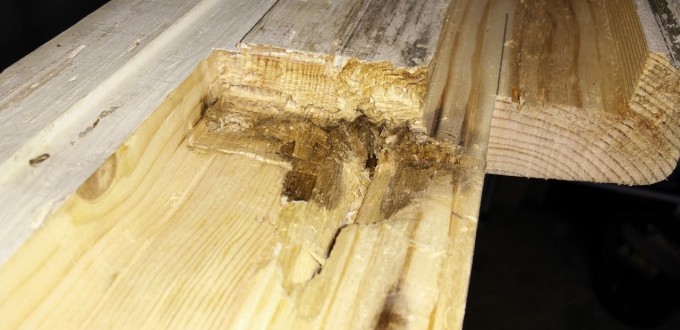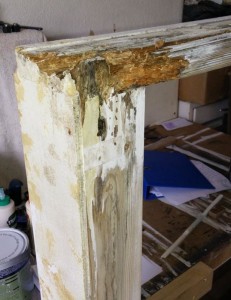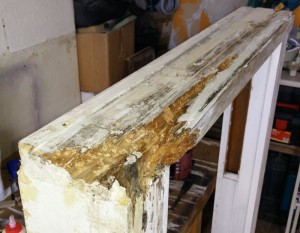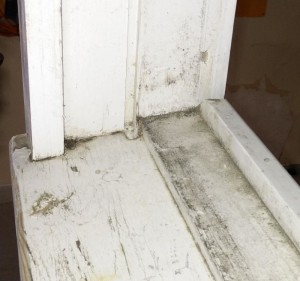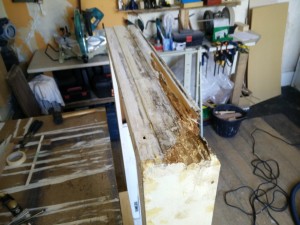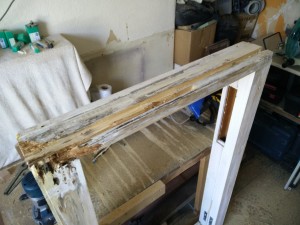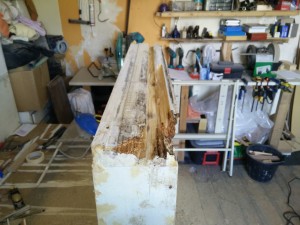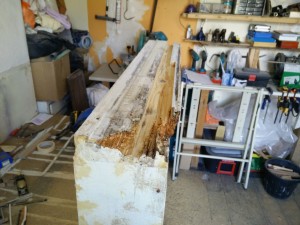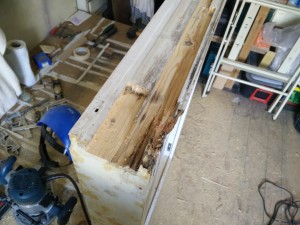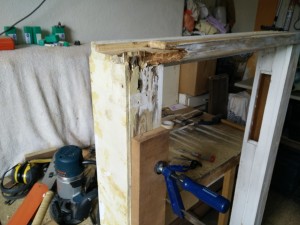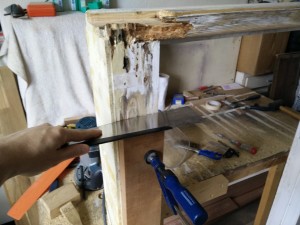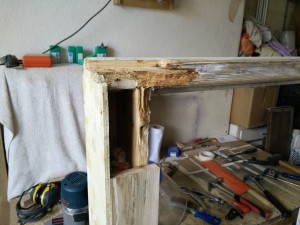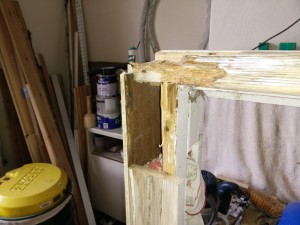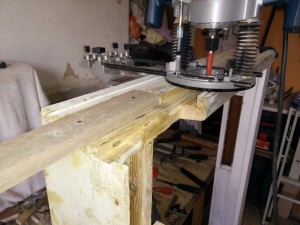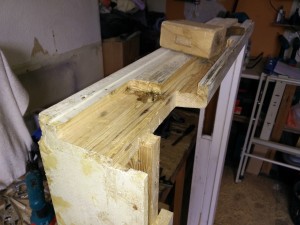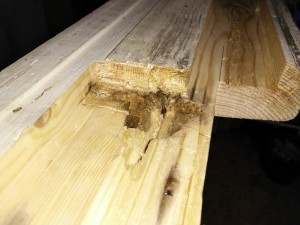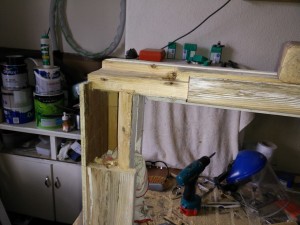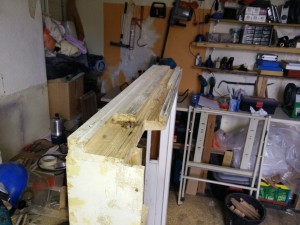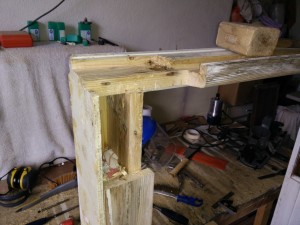In this article I repair a window sill on a sash window that I removed from an extension we were having demolished. The window is modern, probably only a decade old, but the sill is already in a poor condition because it’s been made of softwood and not been looked after very well.
Generally speaking you don’t remove a window frame to fix it but all the techniques I’m using here can be used to repair a window sill that is still in place. As I have this window out already I’ll might as well do a more thorough repair than is normal.
While sash windows are complex compared to the more common casement window they are still quite easy to maintain and can last hundreds of years – the ones at the front of our house are over 200 years old. Of course they will only last if they are built well, from durable materials and maintained properly. This one I’m working on is made to an acceptable standard but from the cheapest pine available and has been given only the lightest of finishes.
So here’s what I have to work with:
As you can see one corner has been eaten away by rot on the bottom of the sill. From the top the sill still appears to be in good shape but I can tell from the screwdriver test that it’s starting to soften up. Slightly annoyingly the rot has run all the way across the sill along the grain of the wood.
My first thought was to replace the sill. It’s already started going rotten and it’s only made from pine so it’s always going to be a fight to stop it failing. After looking up the extortionate price of a replacement and considering the work it would be to replace it I decided a quality repair would be better.
Part of the problem with replacing the sill was that I couldn’t find an exact replacement profile. It took the wife’s keen eyes to spot that the sill is actually made from two parts with a splined joint at the step. I’m not sure why they built it that way, presumably it’s so they can use smaller pieces of timber which are cheaper.
Repair a Window Sill
The first thing I did was remove all the screws I could find. The decay, rust and paint made them hard to spot so I also ran my pipe finder over the area to double-check – fat lot of good it did though…
I then stuck my worst 1/2 inch router bit in the router and ploughed out my first trench. As is always the case the rot was in the most awkward of positions which made the routing hard work – at eye level and with the fence on the wrong side of the router.
The the upside though was once I was through the rot the wood underneath was in very good shape, much better than I had expected. I performed a few more passes and then expanded the trench to the full length of the sill before cleaning up the worst area of rot.
As you can see the sill has cleaned up quite well. There’s a few bits that are still a little soft but I will run wood hardener into them later. The worst of the rot is out though which is what I was aiming for. All in all the job is going better than I expected, the only downside was hitting a huge screw that I hadn’t spotted, that’ll be the carbide tip chipped.
Before I proceeded any further I wanted to tackle the outer lining which was completely rotten at the bottom. I clamped a piece of timber to the frame to act as a guild and sawed through.
A little levering and clean up later and the outer lining was off. As with the sill I was surprised how little the rot had spread into the wood. As a plus the pulley lining and the back lining were in perfect condition. What was revealed though was that I would have to remove a bit more off the window sill to full thickness. That was to be expected though.
I didn’t have any useful surface to run the router along any more so I nailed a block of wood to the area I’d cut out and routed (butchered) out a portion of the sill.
Remember the screw I hit with the router above, I hit it again so this time I removed it. I also dug some of the rot out around the screw and discovered why the sill rotted in the way it did.
Where the two pieces of the sill are splined together there is a small channel, it would seem that water gets trapped and rots the sill from the inside out. Where the screw had penetrated the channel it has spread along the screw hole as well. I’ve noticed you always get more rot around screws. I suspect the iron must feed the rot like fertilizer.
All that was left to do now was clean up the scrappy corners and flatten everything out a bit so that the repair step is easier. This (mostly) finished tidy up is shown below.
In part two I start the repair work.
